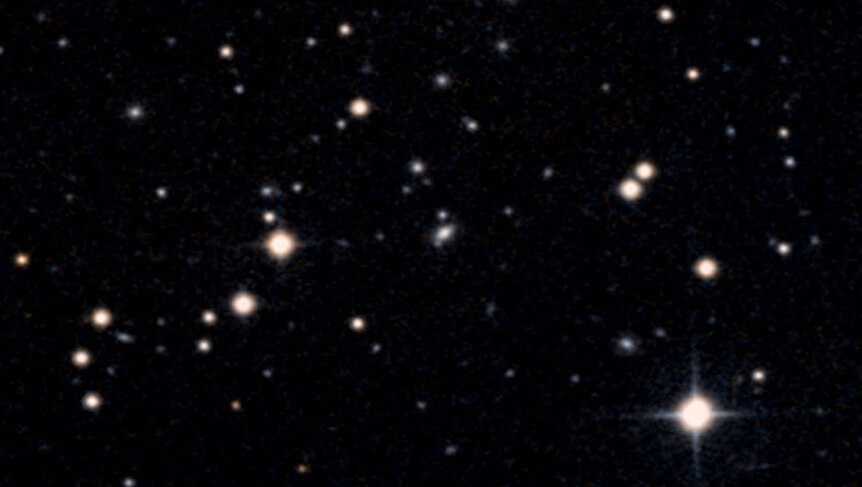Create a free profile to get unlimited access to exclusive videos, sweepstakes, and more!
Potentially mind-blowing secrets of the universe could be exposed with new NASA missions

Unless some all-knowing alien beings enlighten us about things in space that our human brains can barely fathom, the universe is always going to keep secrets from us Earthlings.
NASA’s newest approved missions will try to illuminate a few more things out there in the infinite darkness. Aspera, Pandora, StarBurst and PUEO, which are under the new NASA Astrophysics Pioneers program, will seek to find out everything from the evolution of faraway galaxies to habitable exoplanets, neutron star mergers and neutrinos, the strange subatomic particles that can travel through the universe unscathed while holding on to information from phenomena that happened billions and billions of years ago.
What can gas in the empty expanse between galaxies tell us about what those galaxies have gone through? Where are all the exoplanets that could potentially be crawling with alien life-forms? How did epic stellar collisions form a treasure trove of gold and platinum? What really happened fractions of a second before the Big Bang?
StarBurst may be small (three out of the four missions will be carried out by SmallSats), but it will investigate something huge. Neutron star mergers happen when two neutron stars, the dense remains of astral corpses, orbit each other in a death spiral until they finally head-butt each other. They are thought to be the ultimate extraterrestrial sources of heavy metals like gold and platinum. Not that NASA is actually digging for gold. What StarBurst will look for are the really energetic gamma rays that are spewed out when neutron stars collide. Observatories on Earth usually catch these events from the gravitational waves they also give off. Until now, there has been only one neutron star merger that observed through both gravitational waves and gamma rays. StarBurst is expected to find around ten of these a year.
PUEO is a space balloon that will launch from Antarctica to do some cosmic archaeology. It will be looking for signals from high-energy neutrinos that were blasted out from intense astrophysical phenomena such as black holes and supernovas. Neutrinos are subatomic particles thought to have emerged 15 billion years ago, right before the Big Bang. The universe became transparent to them just a second later, meaning they could traverse space like ghosts that could pass through anything. They have no electric charge, nearly no mass, and interact with nearly nothing. Neutrinos could still be carrying information about what happened just before the universe exploded into being.
Right before the core of a gargantuan star collapses, it smashes protons and electrons together, releasing neutrinos that zoom through the star just before it goes full supernova. Not that Betelgeuse is going down anytime soon, but neutrinos could give us the signals we need in case a supernova happens too close to Earth.
Pandora may not exactly be searching for aliens, but it will be able to tell us more about potentially habitable exoplanets as they pass in front of, or transit, their stars. Shifts in starlight can affect the different ways an exoplanet is measured, so it is possible that a star could screw up our perception of whether or not that exoplanet might be able to spawn life. Signals from stars and planets can also get confused, and one of Pandora’s priorities is to make those signals clearer. It will keep an eye on 20 stars and the 39 exoplanets that orbit them, observing in both visible and infrared light.
Aspera was named after the Latin word for “hardship” for a reason. Whatever is floating around in the intergalactic medium has been notoriously difficult to study up until now. About the size of a mini fridge, the SmallSat will see in UV and be the first ever spacecraft to directly beam back observations from the intergalactic medium, or the low-density gas that flows between galaxies. Sometimes it even connects them. Hypersensitive telescopes have shown that there are more exotic types of gases in the intergalactic medium than previously thought. There is also much more stuff in what only appear to be empty spaces.
Supernovas and galactic mergers are powerful enough to send an enormous amount of star stuff flying through space. Powerful winds that arise in the wake of these events can scatter particles everywhere and prevent stars from forming. What principal investigator Carlos Vargas really wants to demystify is the elusive “warm-hot” gas that most of a galaxy’s mass is thought to come from.
"There is this intermediate form we refer to as warm-hot, and that is particularly interesting because it provides the fuel for star formation," he said. "No one has been able to successfully map its distribution and really determine what it looks like."
Whatever it finds, this mission is definitely going ad astra per aspera—“through hardships to the stars”.



























